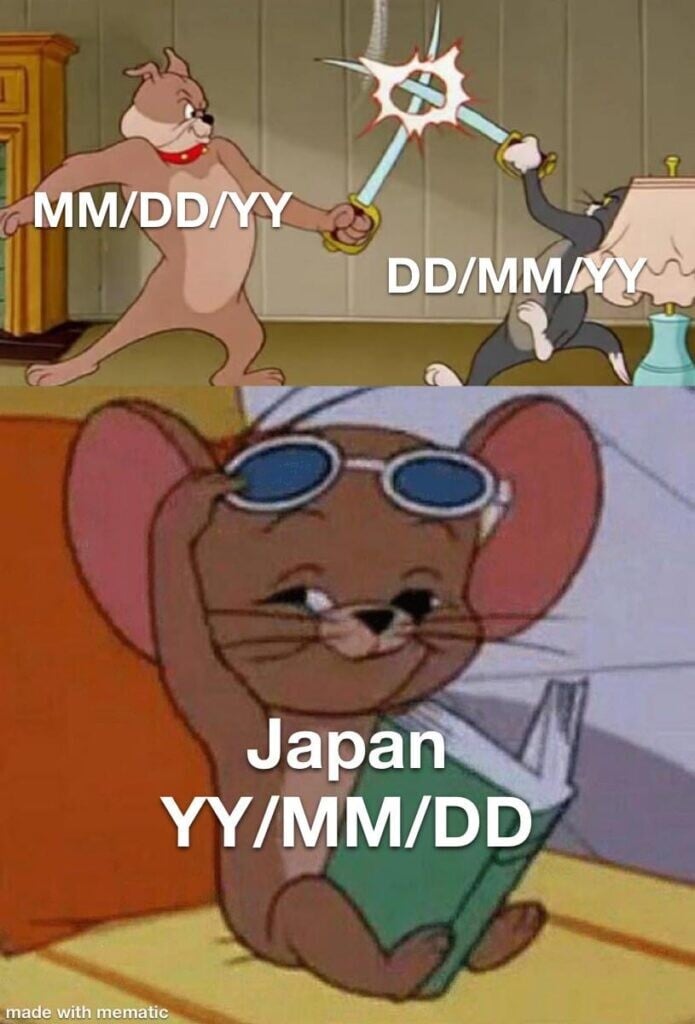this post was submitted on 22 Nov 2023
1041 points (95.9% liked)
Memes
45665 readers
985 users here now
Rules:
- Be civil and nice.
- Try not to excessively repost, as a rule of thumb, wait at least 2 months to do it if you have to.
founded 5 years ago
MODERATORS
you are viewing a single comment's thread
view the rest of the comments
view the rest of the comments

YYYY-MM-DD:HH:MM:SS
Funny thing, in ISO 8601 date isn't separated by colon. The format is "YYYY-MM-DDTHH:MM:SS+hh:mm". Date is separated by "-", time is separated by ":", date and time are separated by "T" (which is the bit that a lot of people miss). Time zone indicator can also be just "Z" for UTC. Many of these can be omitted if dealing with lesser precision (e.g. HH:MM is a valid timestamp, YYYY-MM is a valid datestamp if referring to just a month). (OK so apparently if you really want to split hairs, timestamps are supposed to be THH:MM etc. Now that's a thing I've never seen anyone use.) Separators can also be omitted though that's apparently not recommended if quick human legibility is of concern. There's also YYYY-Wxx for week numbers.
YYYY-MM-DD:HH:MM:SS+TZ
RFC3339! It's like ISO8601, but good!
YYYY-MM-DDTHH:MM:SS.SSSSSSSSSZ
This, but all run together.
I write files/reports to disk a lot from scripts, so that's my preferred format.
I just go for a unix timestamp and use terminal/filemanager to sort by or display the datetime
Are you talking epoch? I don't care for that mainly because it's not human readable. I see the use for it, but I struggle with it in practical use.
Yep. I mostly like datetimes for simple sorting. If it needs to be human readable iso is the way to go tho.